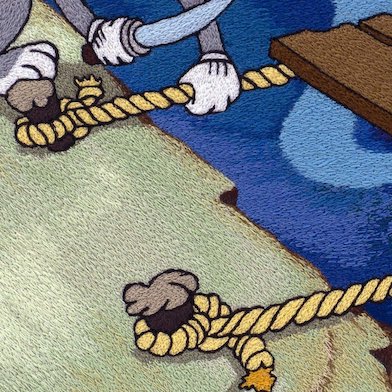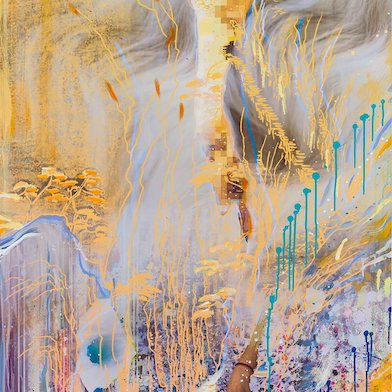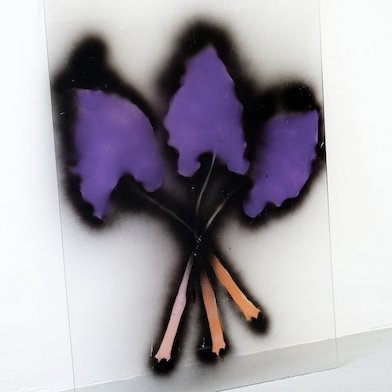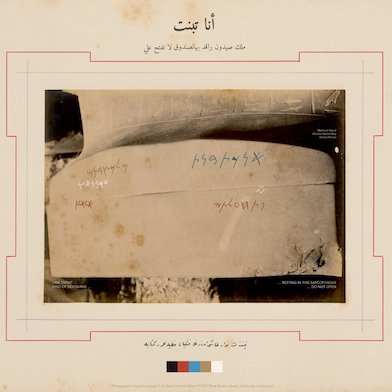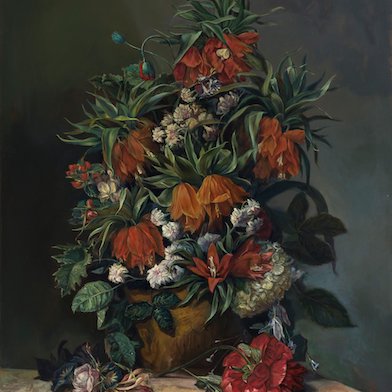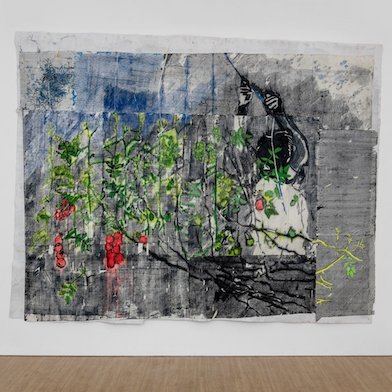Open: Tue-Fri 11am-7pm, Sat 12-7pm
Visit
Bob Law
Thomas Dane Gallery, Naples
Tue 26 Oct 2021 to Sat 18 Dec 2021
Via Francesco Crispi, 69 (1º Piano), 80122 Bob Law
Tue-Fri 11am-7pm, Sat 12-7pm
Artist: Bob Law
in association with Richard Saltoun
“I have, or I think I have, my perfect work in my mind’s eye. To bring that work into reality or existence is another matter - there is always some small flaw. Some improvement to be made. And it is this seeking after quality that most interests me ... The work becomes a very serious trial and examination process in which the artist is solely responsible to himself for the quality and conviction of the work. The justification of the work is in the endeavour of the artist to seek out the quality and skill within his own mind and correlate his inner spirit with the art he can touch and make.”
Bob Law, July 1977
Installation Views



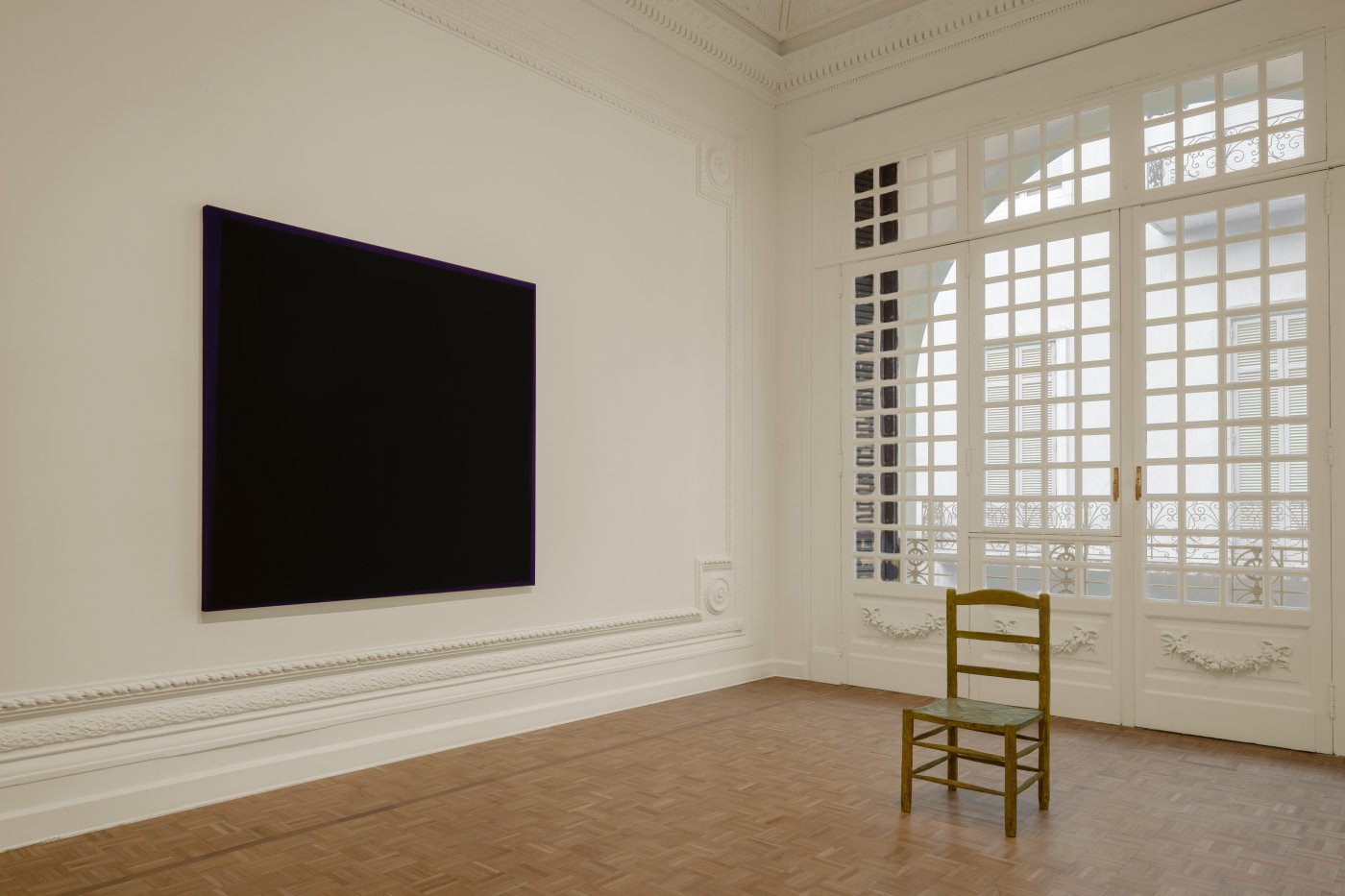
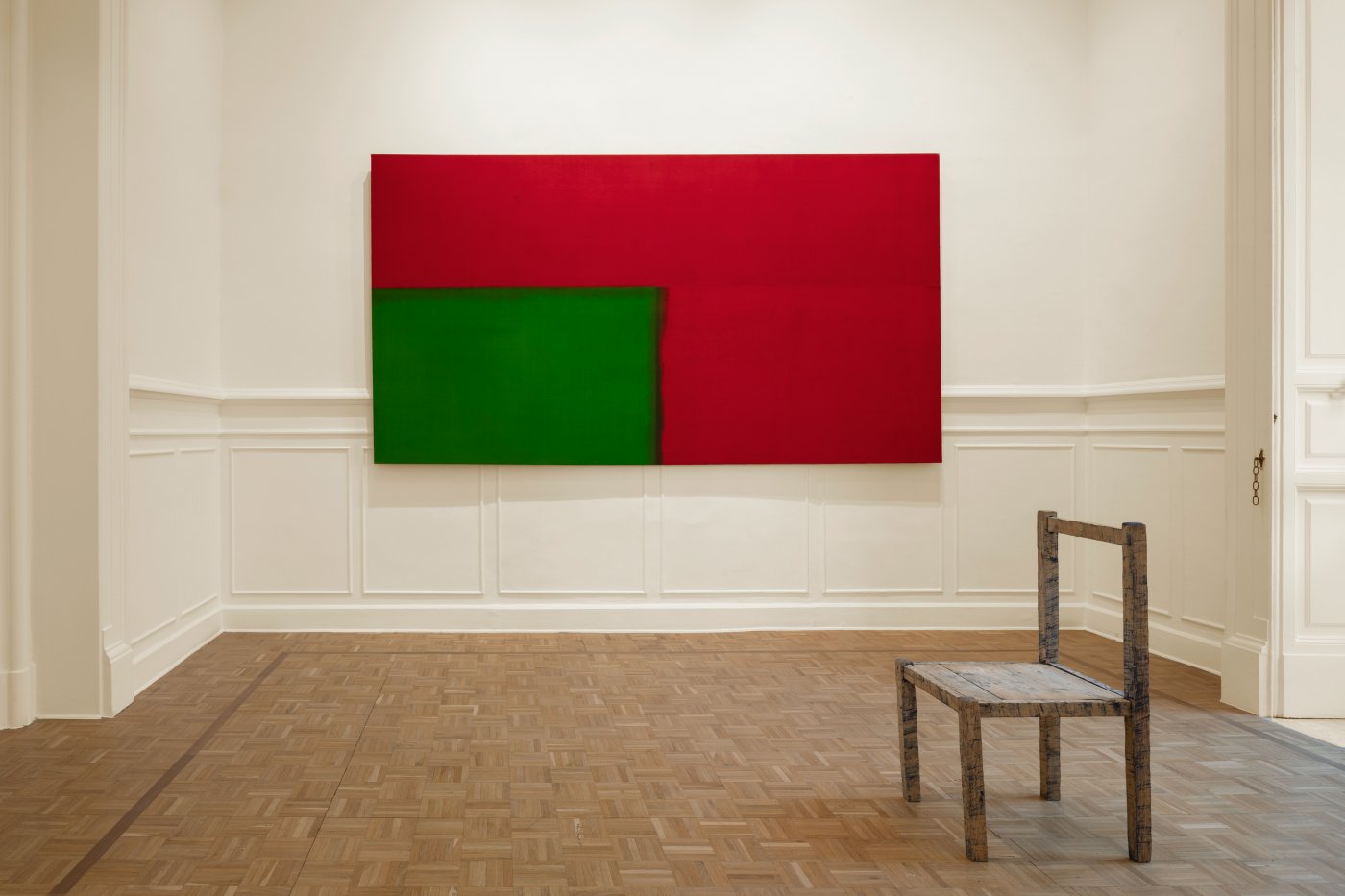

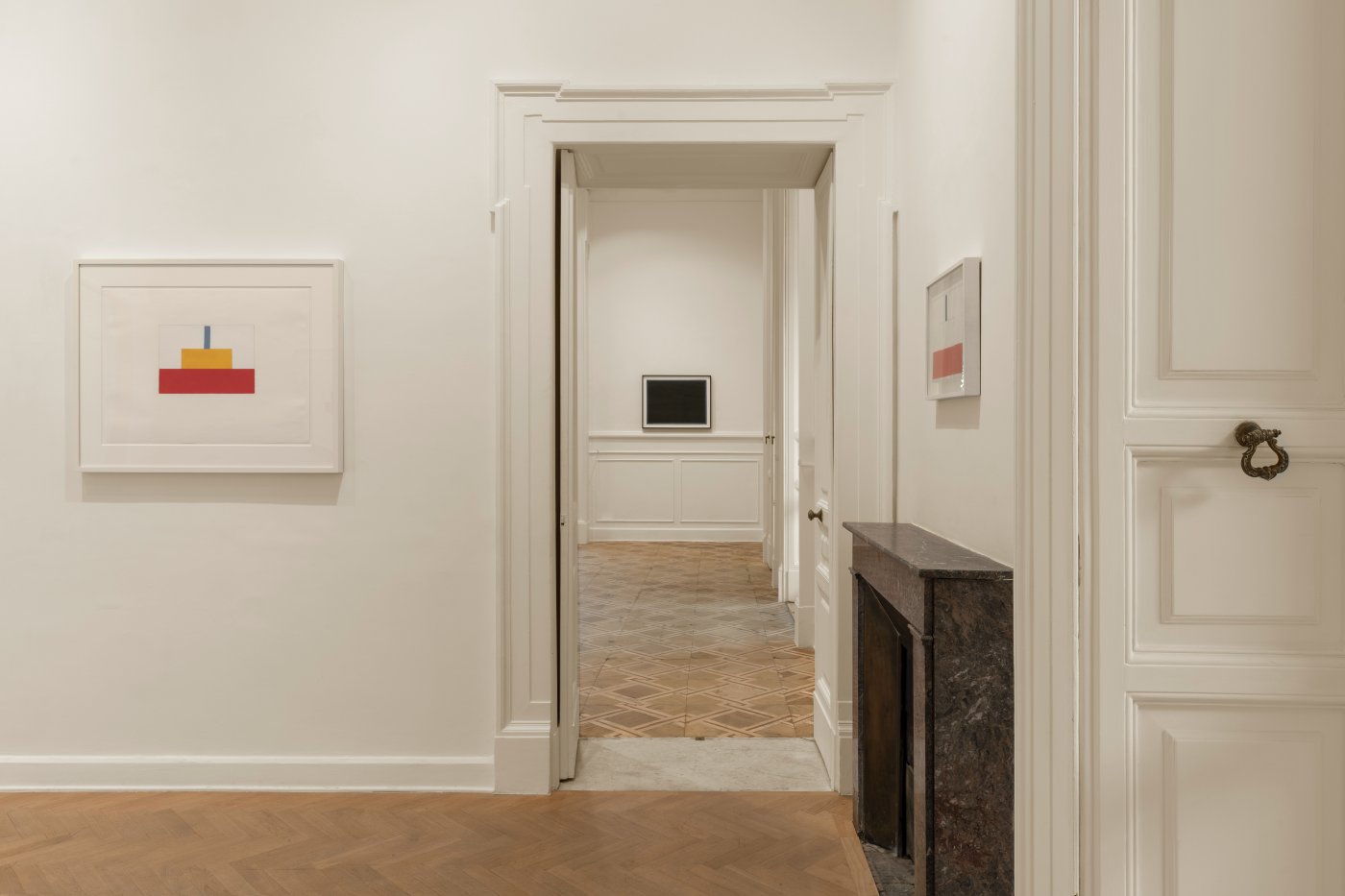
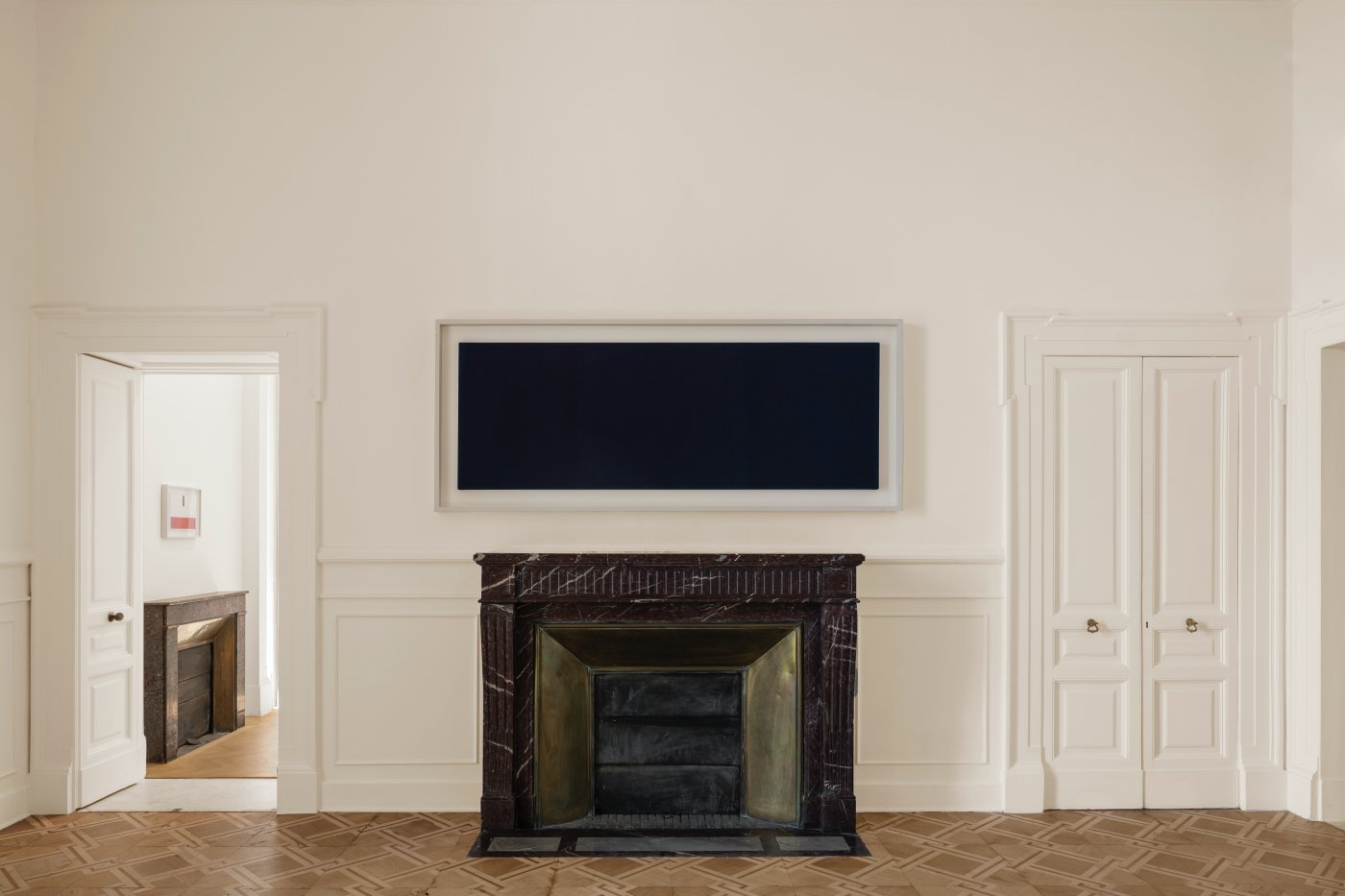
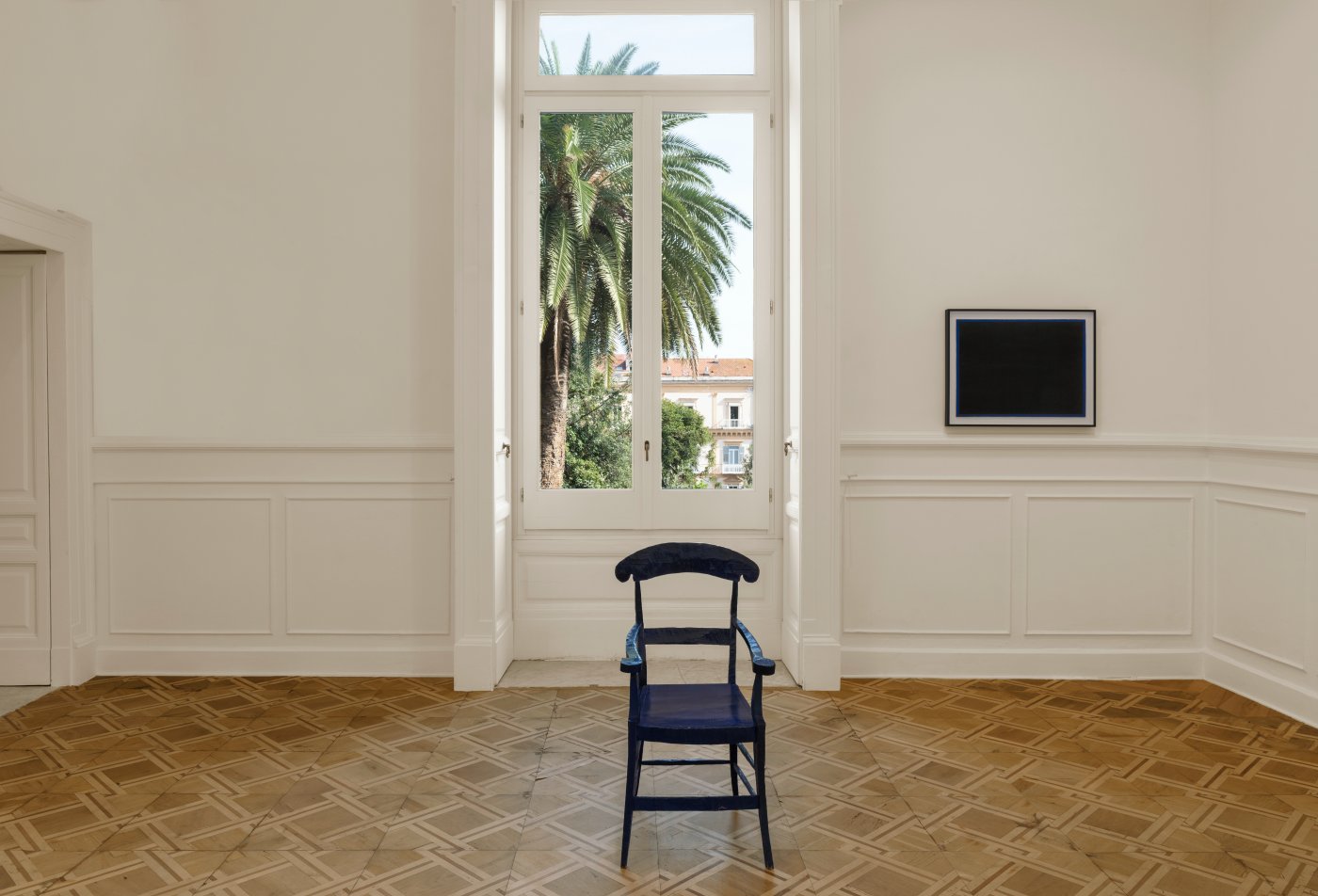
On the Road to Nothing and Nowhere
by Douglas Fogle
This is a story about nothing. Or more precisely, about the paradoxical process whereby nothing can in fact become something. It begins with a piece of paper and an eraser. The year is 1953 and a young Robert Rauschenberg has just returned to New York from an eight-month-long-trip to Italy and North Africa with his friend Cy Twombly. Getting back to work in the wake of his White Paintings (1951) and Black Paintings (1951-53), Rauschenberg looked for a way to extend what he called ‘the monochrome no-image’ into the realm of drawing. He came upon the idea of erasure as a continuation of his search for a zero degree of artistic production. After ruling out the idea of erasing one of his own works, Rauschenberg approached the more senior artist, Willem de Kooning, in order to obtain a drawing that he might use in his aesthetic experiment. After extracting a drawing from the reluctant artist, Rauschenberg began the laborious process of using a large number of erasers to remove de Kooning’s crayon markings from the surface of the sheet of paper.
The result was Rauschenberg’s Erased de Kooning Drawing (1953), a work that is now heralded as one of the more important conceptual and aesthetic milestones in the trajectory of post-war contemporary art. Rauschenberg's gestural erasure of de Kooning's drawing was not simply a Neo-Dadaist negation of a more established artist's overpowering aura, as is commonly discussed (after all, de Kooning wittingly gave him the drawing). In painstakingly removing the expressive traces of the original artist's hand through the concrete friction generated by his own bodily movements, Rauschenberg enacted a kind of reverse archaeology. By rubbing the material evidence of de Kooning's presence away, he revealed the blank surface of the paper to be a receptive screen on which one could project anything. This physical social history sits upon the surface of Erased de Kooning Drawing as much as it does on any surface that has been worked on over and over again, emphasising the fact that this erasure was as much a phenomenological act as it was an aesthetic one. The transformative character of Rauschenberg's radical gesture is that it turned something into nothing. This was, however, a nothingness pregnant with endless possibilities, since any erasure always leaves behind the traces and ghosts of past incidents, chance encounters and conversations as much as it does a purportedly 'blank' receptive surface.
Famously, John Cage emphasised this aspect of Rauschenberg's work in 1961 by referring to the painter's White Paintings (which he had much admired when Rauschenberg produced them in summer 1951 at Black Mountain College, Black Mountain, NC) as 'airports for lights, shadows, and particles'. In this sense, the matte monochrome uniformity of Rauschenberg's white panels, devoid of any kind of painterly effect, created a kind of receptive nothingness that in Cage's mind allowed them to become landing sites for all kinds of enunciative phenomena.
These mute projection screens would play the same role as Cage's revolutionary score for his work 4' 33'' (1952), in which three completely silent musical movements allow the world to make its own ambient music. In both of these historically pivotal works, the artists deployed their reductive aesthetic structures in order to frame the plenitude of the world around us. In doing so, they ushered in a revolution of meaningful nothingness that went far beyond the confines of the New York art world.
As an American who has come to know Bob Law's work only recently, it is hard for me not to imagine the artist sitting in the fields around St Ives in the late 1950s with sheaves of blank drawing paper – his 'airports' for recording what the philosopher Gaston Bachelard would call the 'intimate immensity' of the world that surrounded him. Neither simply a Minimalist, nor completely grounded in the iconoclasm of Conceptualism, Law seems to have occupied a unique middle position within the constellation of post-war international contemporary artists. Although it is unclear whether or not he was consciously aware of the ground-clearing experiments of Rauschenberg and Cage, it is certain that Law was fuelled by his own unique and enthusiastic embrace of the fecund potential of nothingness. Taking up pencil, pen and brush in the pursuit of getting 'closer to the truth instead of the illusions', as he put it, Law would embark upon a parallel artistic trajectory to that of Rauschenberg, Cage and many others, in which he would become a willing participant in an oncoming revolution that would celebrate the transformative value of nothing and nowhere.
The irony of Fyfe Robertson's 'everyman' critique of Law's participation in the Hayward Annual: Current British Art at the Hayward Gallery, London, was the populist television critic's inability to see that Law's 'road to nothing and nowhere' was in fact a path marked by the artist's fervent desire to produce something and to get somewhere – albeit with a reductive set of means. Law was a searcher who was not only trying to find his way in the world of contemporary art but was also attempting to orient and ground himself in the world at large. In his earliest extant works such as his Field drawings, for example, the artist threw himself into the countryside around St Ives with the task of locating himself physically and psychically in the world around him, without resorting to the clichéd conventions of traditional figurative representation or the genre of landscape painting.
As Law put it in a conversation with the critic Richard Cork in 1974:
The early Field drawings were about the position of myself on the face of the earth and the environmental conditions around me: the position of the sun, the moon and the stars, the direction of the wind, the way in which the trees grew, an awareness of nature's elements, an awareness of nature itself and my position in nature on earth in a particular position in time. I was finding myself, and the map that went with myself. I was transcribing it graphically into charts.
Having rejected his own earlier and more conventionally figurative landscape drawings, Law set out in 1958 to clear the ground by employing a new economy of representational means that were notational – almost hieroglyphic – markers of his phenomenological position in space and time. In order to situate himself within the landscape of the natural world around him through the practice of drawing, he developed a set of highly reductive and formally coded ideograms that he would use repeatedly to denote the sun, the moon, clouds and trees.
ln each case, these carefully positioned icons inhabited a blank visual-field delimited by a rectangular framing device that the artist drew with a single line just inside the edges of the rectangular paper. As much a proscenium as a boundary, these slightly off-kilter and unabashedly freehand framing lines would appear over and over again in these drawings. Graphically reiterating the convention of the picture frame – albeit with a deliberately handmade sensibility – this conventional representational boundary had the effect of providing a provisional field of protective containment or a talisman, holding at bay the sublime terror evoked by the expansiveness of the void, whilst also emphasising the receptive emptiness of the blank piece of paper. In a sense, these framing lines became projection screens on which the intimate and transitory theatre of the everyday would play itself out. Clouds would move across his field of vision; the wind would blow; stars would make their appearance in the dusky sky; and the sun and moon would trace their celestial trajectories across the arc of the visible world. All of these movements would find themselves recorded, one after another, within the field of drawing defined by Law's graphite boundary and in doing so the artist would find himself.
Comparable to the compulsively repetitive and highly personal drawn notations of Conceptual artists of the 1960s – such as Hanne Darboven, whose signature collection of linear constructions of numbers, lines and markings would cover pages of graph paper in an attempt to systematically record the passage of time – Law would execute tens of these Field drawings each day, after which he would ruthlessly edit his output and resolve upon a handful of finished works. While Darboven called herself a writer rather than an artist or a draughtsman, Law would similarly attempt to trace his movement through space and time with his own idiosyncratic graphic vocabulary. Some of these drawings included obviously erased and worked-over lines, emphasising a certain ephemeral quality to his observations as if to give a knowing nod to the constantly shifting motion of the natural forces surrounding us. With their seemingly provisional execution and their serial production, Law's Field drawings were both acknowledging the transient nature of the world that we inhabit while also celebrating the profound uncertainty that this transience engendered.
In the world of the Field Drawings, tomorrow would bring another day with another set of unique conditions that would be equally beautiful and no less fleeting than those that came before. Despite their conceptual rigour and their minimal means, these drawings would paradoxically become fragile, poetic records of the passage of a highly subjective and ruthlessly personal non-historical time.
As Law's Field Drawings progressed, they would become more and more minimal. And as they started to disappear, they would leave in their wake the ghostly emptied-out theatre of white nothingness that would be defined by his irregular graphite passe-partouts. These deceptively simple rectangles would come to be the definitive gestures of what were known as his 'open' drawings with everything that the term implies: an open window onto the world; open-ended meaning; open to interpretation; open for business. These works would become perfect receptors for the subjective projections of their viewers while also being antennae exquisitely tuned to the subtle vibrations of the surrounding world.
While confrontational in their emptiness – as populist critics such as Robertson would gleefully point out – the inescapable humanity of their wavering lines speaks to a deeper interrogation of the world at large and the artist's place in it. As Law put it when discussing his drawings:
The 'essence' of this work is the same as in Paleolithic cave painting. The hunter artists drew the beast so that it could be seen and meditated upon when it was not actually present. In the same way we write a book or make an equation because we are not yet advanced enough to hold it in our heads. That means once you draw a line around your hand and then take your hand away the mark where your hand was exists even though your hand is no longer there. What does exist is an imprint and that is the beginning of art, in there being nothing which is something. Art is the result of thousands of years of thinking how to think.
Law's exposition on the origins of Paleolithic art would seem to suggest that the lines of his 'open' drawings were in fact summoning something rather than nothing.
In this case, the something that is called into being is the direct result of the all too human movements of the artist's hand – or what he refers to as the artist's 'imprint' – which he attributes to the foundational moment of artistic endeavour. ln the case of Law's 'open' drawings, his graphite boundary would become a framing device comparable to the open structure of Cage's score for 4' 33''.
Within the confines of Law's lines, as with the delineating structure of Cage's three silent movements, worlds full of multiple possibilities would emerge. This is the revolution of nothingness giving birth to a new way of seeing that did not involve representing the world but rather allowing the world to imprint itself on our individual and collective consciousness. What is contained within the boundaries of Law's lines in his 'open' drawings, or within the silent structure of Cage's composition, was not a cynical or ironic rejection of the experience of the viewer but rather a deepening of vision in a call for a new kind of perceptual openness.
Standing in symbiotic relationship to Law's 'open' drawings was another group of simultaneously produced works known as his 'closed' or ‘black’ drawings. In these works, the same irregular linear line following the contours of the inside edge of the paper would define a field that would be completely filled with dense and feverishly rendered cross-hatched pencil marks.
With the artist's hand visibly present on the surface of these works, their darkened fullness constitutes a necessary inversion of the spatial inclusiveness of his 'open' drawings. Maintaining the uneven and imperfect rendering of the listing internal infrastructure of his framing line, the complete overall density of the 'closed' drawings appears, at first glance, to close off the infinite possibilities of the 'open' drawings. When one looks at them, however, while taking into account the phenomenological aspect of these works that the artist himself emphasised, one can begin to see their dark emptiness in a new light. Taken as a window or a perceptual aperture, the 'closed' drawings merely show the inverse of the 'open' drawings, in effect pointing to the diurnal rhythms of our own bodily system of perception. Looking through a window after dark in order to survey the descent of night upon the landscape, we are offered up a kind of visual silence that is equally replete with possibility as the negative space of the 'open' drawings.
Law would continue this pursuit of the poetic possibilities of the void, in a related body of works begun in the late 1960s that are referred to as the Black Paintings. If the blackness of his 'closed' drawings was frenetic and emphasised the movement of the artist's hand through space and time, in these works Law would try to remove his own hand from the equation as much as possible, by painstakingly depositing numerous completely uniform and affectless layers of different coloured acrylic paints in an attempt to negate any traces of his own presence.
Day after day he would paint his canvases with perfectly flat monochrome coats of violet, blue, indigo, purple and black – letting each one fully dry before moving on to the next. This meticulous reapplication of paint was reminiscent of geological sedimentation. Sitting one on top of the other, these painterly strata would come together to create highly complicated and richly populated versions of the colour black, giving a startlingly evocative texture and multivocal quality to the purported nothingness of the void.
Although Law would go on to produce many other series of works over the course of his nearly five-decade career, it is instructive to note that this play between lightness and darkness, something and nothing, being and the void – that was already at work in his earlier drawings – would find its continuation and culmination in a series of 14 large canvases grouped under the titles Mister Paranoia and Nothing to be Afraid of, that the artist completed between 1969 and 1972. The irregular rhomboidal framing lines that first appeared in his Field Drawings – which went on to define the surfaces of his 'open' and 'closed' drawings – would then migrate onto the surfaces of these paintings, defining the picture frame along with a handwritten date in the lower right-hand corner. Rendered at first with a laundry marker and then subsequently with oil paint on canvas, their scale seems to be monumental: a colossal shift up from the intimacy of his drawings. These are indeed extremely large canvases that dwarf the viewer. What is striking about them though is that there is an endearing humility in their execution that undermines any kind of heroic reading of the works.
In Mister Paranoia IV 20.11.70 (No. 95) (1970), for example, its expansive dimensions (240 x 418 cm) suggest not so much a painting as a portal that could physically engulf the viewer, offering a passage to another space. time or dimension. All the while, however, these works radiate a decidedly human modesty with their assertive celebration of the handmade quality of their rendering.
Although they seem to mimic the imposing scale of American colour field painting that had captured Law's interest at the time, they shy away from the grandiose pronunciations of existential angst so dear to the purveyors of Abstract Expressionism. To the contrary, these paintings emanate from a place of profound intimacy as the artist strains to find his position physically and psychically within the immensity of the world, while their titles undermine the tired heroic narrative of post-war painting with their playful invocation of 'paranoia' and 'fear'. Nothingness, the void, zero degree, null set: far from directing us to a situation of complete negativity – of paranoia and fear – these terms speak productively to the untapped potential energy radiating from Law's canvases and drawings.
If the respiration between lightness and darkness and between nothing and something in Law's work suggests that a kind of Heisenbergian uncertainty is at play, we need to see this not as a problem but as a virtue. In his drawings and paintings, Law submits that we are neither here nor there but somewhere in-between being and nothingness, or rather, a nothingness that is the guarantor of being. One might say that there is a quantum model at work here; a cosmological model; an anthropological model; or certainly a phenomenological model. All of these would be correct. Law's work is neither Minimal nor Conceptual but is, rather, open and searching. Although he produced his work in the context of the revolutionary artistic upheavals of the 1950s to 70s, his journey was very much his own. In this light, we have to acknowledge that there is an obvious kernel of truth in Robertson's criticism. Law indeed travelled far down the road to 'nothing and nowhere', but what the critic failed to grasp was that this was a good thing. As Cage said in his 'Lecture on Nothing' (1959) when referring to the resistance to his advocacy of silence and nothingness: 'We need not fear these silences – we may love them.' We might say the same thing about Law's road to nothing and nowhere.
Biography
Considered amongst the founders of British Minimalism, Bob Law's work defies easy categorisation and ranges across drawing, painting and sculpture that retains a firm yet always uneasy embrace of pure abstraction. As opposed to the New York-based minimalist artists, Law's practice drew on his engagement with the English landscape and his esoteric range of interests.
Championed by the critic Lawrence Alloway, whom he met while in Cornwall, Law exhibited with Peter Hobbs in Two Young British Painters at the Institute of Contemporary Art, London (1960). There followed one-man shows at some of the most prestigious galleries across Europe, including Konrad Fischer, Dusseldorf, Germany (1970) and the increasingly influential Lisson Gallery, London, England (1971). Major institutional solo exhibitions include 10 Black Paintings 1965-70, Museum of Modern Art, Oxford, England (1974); Bob Law: Paintings and Drawings 1959-1978, Whitechapel Gallery, London, England, curated by Nicholas Serota (1978); and Bob Law: Drawings, Sculpture and Paintings, Newlyn Art Gallery, Cornwall, UK, which travelled to Kettle's Yard, Cambridge, England (1999). Recent group exhibitions include Assorted Paper, The Sunday Painter, London, England (2017); Artists and Poets, Secession, Vienna, Austria (2015); Abstract Drawing, curated by Richard Deacon, Drawing Room, London, England (2014); A House of Leaves, curated by Vincent Honoré, at DRAF, London, England (2013). His work is included in numerous private and public collections throughout the world, including Tate, London, England; the British Museum, London, England; The Guggenheim Museum, New York, NY; the Stedelijk Museum, Amsterdam, the Neetherlands; the Art Gallery of New South Wales, Sydney, Australia; Museum Sztuki, Lodz, Poland; and the Panza Collection, Varese, Italy, amongst others.

